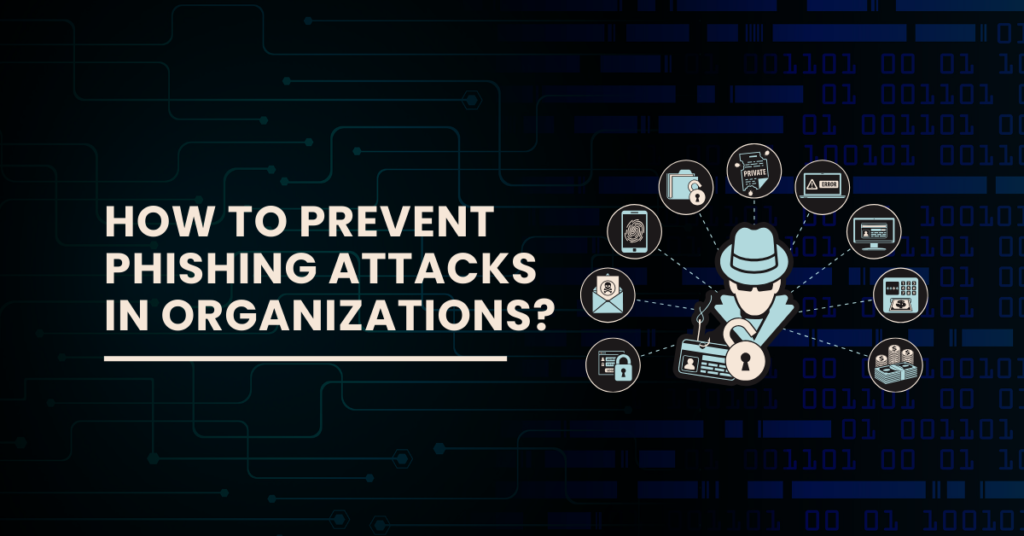How to Prevent Phishing Attacks in Organizations?
In today’s digital age, where technology plays a crucial role in everyday business operations, organizations face a growing threat from cybercriminals. One of the most common and dangerous forms of cybercrime is phishing attacks. Phishing attacks involve the use of deceptive emails or messages to trick individuals into divulging sensitive information such as passwords, credit card details, or other personal data. These attacks can have devastating consequences for organizations, leading to data breaches, financial losses, and damage to reputation.
What are Phishing Attacks?
Phishing attacks are malicious attempts by cybercriminals to trick individuals into divulging sensitive information such as passwords, credit card details, or personal data. These attacks often involve deceptive emails or messages that appear to be from legitimate sources, aiming to deceive recipients into clicking on malicious links or providing confidential information. Phishing attacks can have severe consequences, including data breaches, financial losses, and reputation damage for individuals and organizations.
In a phishing attack, cybercriminals use various tactics like email spoofing, urgency and fear tactics, and fake websites to manipulate recipients into taking actions that compromise their security. By understanding the characteristics and methods of phishing attacks, individuals and organizations can better protect themselves against these malicious threats and mitigate the risks associated with falling victim to such deceptive practices.
Common Types of Phishing Attack
Email Phishing
This is the most prevalent form of phishing. Attackers send emails that appear to be from legitimate sources, such as banks, social media platforms, or government agencies, but are actually fraudulent. These emails typically contain links to fake websites where victims are prompted to enter personal information like passwords, credit card numbers, or social security numbers.
Spear Phishing
Spear phishing is a targeted form of phishing where attackers customize their messages for specific individuals or organizations. They gather information about their targets from social media, public records, or data breaches to make the emails seem more convincing. Spear phishing emails often target employees of companies or high-profile individuals.
Clone Phishing
In clone phishing, attackers create a replica of a legitimate email that the victim has previously received and interacted with. They modify the content slightly, typically by replacing a legitimate link or attachment with a malicious one. The modified email appears to come from the original sender, increasing the likelihood that the victim will trust it and fall for the scam.
Whaling
Whaling targets high-profile individuals, such as executives or celebrities, with phishing attacks. These attacks often involve sophisticated social engineering techniques and are aimed at stealing sensitive information or gaining access to valuable accounts within an organization.
Malware-Based Phishing
Phishing emails may also contain attachments or links to download malware onto the victim’s device. This malware can steal sensitive information, such as passwords or banking details, or give attackers remote access to the compromised system.
Strategies to Prevent Phishing Attacks in an Organization
Employee Training and Awareness
Educating employees about the dangers of phishing attacks is essential in building a strong defense. By providing regular training sessions on how to recognize phishing emails, employees can become more vigilant and responsive to potential threats. Simulating phishing attacks allows organizations to assess employees’ awareness levels and response readiness, enabling them to identify areas for improvement and further training.
Implement Multi-Factor Authentication (MFA)
Multi-Factor Authentication (MFA) enhances security by requiring users to provide multiple forms of verification, such as a password, a code sent to a mobile device, or biometric data, before accessing their accounts. By implementing MFA, organizations can significantly reduce the risk of unauthorized access, even if login credentials are compromised in a phishing attack.
Use Email Filtering and Authentication Tools
Deploying email filtering tools can help organizations identify and block phishing emails before they reach employees inboxes. These tools use algorithms to detect suspicious email patterns and content, reducing the likelihood of employees falling victim to phishing attempts. also, implementing email authentication protocols like SPF (Sender Policy Framework), DKIM (DomainKeys Identified Mail), and DMARC (Domain-based Message Authentication, Reporting, and Conformance) can verify the legitimacy of incoming emails and prevent email spoofing.
Regularly Update Security Software
Keeping all systems and software up to date with the latest security patches is crucial in preventing cybercriminals from exploiting known vulnerabilities. Regularly updating security software ensures that organizations have the necessary defenses in place to withstand evolving phishing tactics and other common cyber threats.
Encourage Vigilance and Reporting
Fostering a culture of vigilance among employees is key to preventing phishing attacks. Encourage employees to scrutinize emails and links before taking any action, especially if they seem suspicious or unusual. Providing clear guidelines on how to report suspicious emails or incidents empowers employees to take immediate action in case of a potential phishing attack, helping to mitigate risks and protect the organization’s data and assets.
Monitor and Analyze Phishing Trends
Staying informed about the latest phishing trends and tactics used by cybercriminals is essential for organizations to adapt their defense strategies effectively. By monitoring and analyzing phishing attempts targeting the organization, security teams can identify patterns, trends, and vulnerabilities that need to be addressed. This proactive approach enables organizations to strengthen their defenses and stay one step ahead of cyber threats.
Conclusion
Preventing phishing attacks requires a multi-faceted approach that involves educating employees, implementing security measures, and fostering a culture of security awareness. By taking proactive steps to protect against phishing attacks, organizations can safeguard their data, finances, and reputation. Remember, the best defense against phishing is a well-informed and vigilant workforce. Stay safe, stay secure!
Looking for comprehensive IT solutions in Dubai? Explore our leading Cyber Security Services in Dubai at AGN IT Services. Ensure your company’s security with our scalable solutions and expert strategies. Contact us today to fortify your data and network security, and experience a seamless IT experience with our IT Support services.
Share this post if you find it useful –



